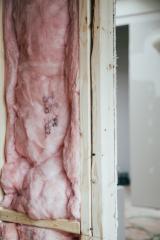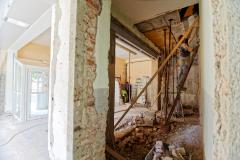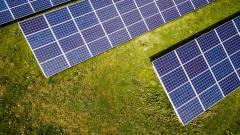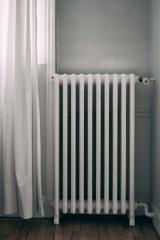Sustainable (re)construction
Are you planning to (re)build? Nowadays there are more and more possibilities to do this sustainably. This is not only good for people and the environment, but it can also lower your energy bill. Some measures even pay for themselves! In addition, investing in making your home more sustainable can also lead to a greener energy label. A green energy label can have a positive effect on the value of your home. Finally, a well-insulated home leads to more living comfort, because less chance of cold feet, moisture and drafts.
But what is sustainable building? Sustainable building can be done in several ways, for example, by properly insulating, using sustainable materials or by smart construction. You can also make your home more sustainable by choosing more sustainable heating, or by using solar panels. Every little bit helps.

Insulation
By properly insulating your home, you can save a lot of energy. Insulating improves the comfort of your home, because an insulated house draws less and retains heat better. Other benefits include: less condensation on the windows, warmer feet and also less noise pollution from outside (source: Milieucentraal).
If you have an older home, you can quickly save money with a few inexpensive measures. Examples include draft strips or radiator foil.
There are also larger investments that yield substantial savings on an annual basis such as: double glazing or insulating glass, wall insulation, floor insulation or roof insulation. On the website Milieucentraal you can see what you could potentially save on your energy bill on an annual basis if you insulate.

Smart building
Sustainable design can save energy, for example, by building in a sun-oriented manner that makes the best use of passive solar energy. Passive solar energy is the use of the energy in sunlight without the need for special equipment. By taking into account the incoming sunlight when designing a house, energy can be saved. You will not need to heat your home as much and turn on lights as often. Examples of sun-facing designs include large windows on the south side and small or no windows on the north side. You can also choose to cleverly divide the house so that living areas are on the sunny side and, for example, the toilet is on the north side. In addition, there are several design measures possible to direct sunlight far into the house (source: Milieucentraal).

Sustainable or circular material
In our country, large amounts of raw materials are used to build. Fossil energy sources are mostly used in the extraction and production of building materials. This leads to environmental pollution and climate change.
The production of building materials causes a significant part of the environmental impact of a structure (source: Bouwend Nederland). You can consciously choose to reuse building materials or choose building materials that are made sustainably. Examples include reusing wood, recycled metal, or bio-based materials.

Solar Panels
With solar panels on your roof, you generate your own renewable electricity. The sun does not have to shine brightly to do this: your panels will provide electricity even on a cloudy day. If you install solar panels, your energy bill will be lower and you will earn back your investment. After recouping your investment, you will have free solar electricity for many years to come. The Consumers' Association provides a calculation example to show how long the payback period is.
Is your roof not suitable for solar panels? Then you can still get started with renewable energy by joining an energy cooperative in your neighborhood. An energy cooperative is an initiative of local residents who join forces to work with sustainable energy. This can be by investing in the generation of solar or wind energy. The proceeds are used for other investments in the local community. In addition to purchasing local energy, you can also choose to become a producer yourself by co-investing in an installation. The energy cooperative Morgen Groene Energie is active in the Nuenen area.

Sustainable heating
In addition to properly insulating your home to save energy, you can also heat your home more energy efficiently. You can do this with a high-efficiency boiler. This is easy to install in existing central heating systems.
Note: In view of the Energy Transition, it is important to think about alternatives to heating by natural gas. After all, the Netherlands has the goal of getting all homes off natural gas by 2050. You can anticipate this by purchasing a solar water heater or heat pump. For the latter to be profitable, your home must meet a number of Requirements .
Would you like more information about these alternatives? Then you can get more information from the Energy Counter.

Rainwater harvesting
Do you want to save water? You can do so by including rainwater harvesting in your design. Collecting rainwater can be simple with a rain barrel, for example. The untreated water from the barrel can be used, among other things, to water the plants, or to wash the car.
You can also choose to disconnect rainwater. You do this by diverting the rainwater not to the sewer, but back into the ground. This prevents the soil from drying out. There are several options for disconnecting rainwater. For example: infiltration crates or a wadi. There are also (more drastic) possibilities such as storing rainwater underground, filtering it and using it for the washing machine, or for flushing the toilet. For useful tips on this, please visit the website of Huisje Boompje Beter.
Municipality of Nuenen encourages rainwater collection and disconnection with a subsidy.
Help with sustainability
Would you like help making your home more sustainable? Then you can seek advice from Nuenen's Energy Counter. You can also find more information here about the various subsidy schemes and opportunities to finance sustainability measures at favorable Requirements .
Another helpful website to find out what else you can improve about your home to make it more energy efficient is Improve Your Home.